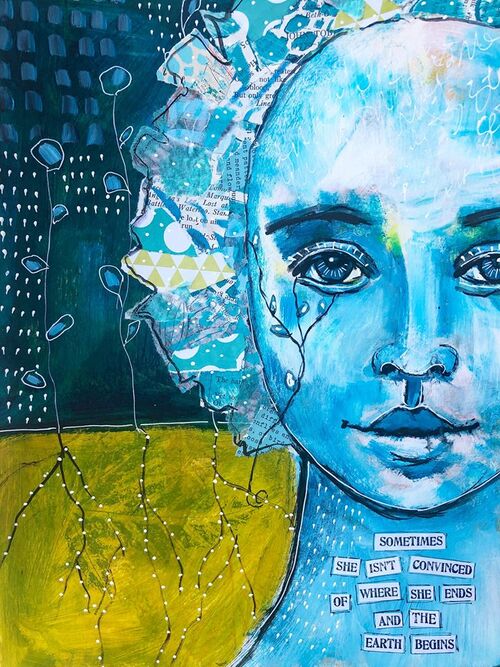


There’s a reason so many people find the art world to be impenetrable and elitist – it’s designed to be.
Don’t get me wrong, I love visiting my local art gallery; it’s a great place to take the kids, and often, I discover beautiful and thought-provoking pieces. But sometimes, I feel downright frustrated by the works that have been chosen for inclusion.
A few years ago, I encountered a memorable piece of modern art – a scrunched up piece of A4 paper, lying on the floor, surrounded by a do-not-cross rectangle, presumably to ensure the janitors didn’t sweep the thing up after the gallery closed.
I watched, as gallery patrons came and went, most spending several minutes staring, contemplatively, at the scrunched-up paper. Nobody laughed; there was only deferential silence. Seeking guidance, I read the accompanying plaque, which said something about how the scrunched up paper was representative of the creative struggle.
Maybe it was. But it was still a scrunched up piece of paper. And to me, that piece was a perfect representation of the insular nature of the art world, the fact that an elite group of insiders can magically imbue a piece of paper with a massive amount of monetary and cultural value, merely by proclaiming it so.
Earlier this week, Italian artist Maurizio Cattelan’s creation, “Comedian,” a banana duct-taped to a wall, was sold for $120,000. A few days later, the banana was eaten by a local performance artist, David Datuna.
“Comedian,” however, lost none of its value – the eaten banana was soon replaced by another, equally ordinary banana, which inherited the monetary value of the previous banana, and was even deemed important enough to warrant police protection, in the event of another hungry performance artist.
“[Datuna] did not destroy the artwork. The banana is the idea,” Lucien Terras, a director at the gallery, told the Miami Herald. Perhaps the entire thing was staged, a publicity stunt, like Banksy shredding his own artwork, an act which only increased the value of said work.
“Comedian” seems to be a meta-commentary on the nature of value, perhaps mocking those with the authority to transform a piece of fruit into a small fortune. But even viewing the piece in that context seems to be giving the banana too much credit – questioning the valuation of art isn’t exactly an original idea. More than a hundred years ago, Marcel Duchamp turned an ordinary porcelain urinal into a famous piece of art, titled “Fountain.” I’ve seen a replica of the piece in my local gallery, and I even stared at it, contemplatively.
Of course, no one can tell you what is art, and what is not; there’s no official definition, no clear boundaries. If it moves you, you can call it art. If it doesn’t, and you want to call it art regardless, that’s fine. If art is anything, it’s subjective.
To the outsider, modern art often appears incomprehensible, and the belief that art somehow “peaked” decades, or even centuries ago, isn’t uncommon. Admittedly, it is easier to see the effort and skill behind a classical painting or sculpture than many modern, abstract installations. The context behind modern art isn’t always obvious. But then again, the fact that a banana can be sold for $120,000 is outright obscene.
Great art still exists, often outside of the major art institutions, in the small spaces, sold in stands and tiny galleries, untainted by the tsunami of money flowing through the mainstream.
But much of the art world, to me, resembles a niche internet subculture, a community of insiders, sharing memes that rarely leave the circle, memes which become progressively self-referential and abstract, until they evolve to the point that an outsider could never interpret them. To the outside world, the meme might be indecipherable nonsense, but to the community, it is imbued with meaning.
That’s the art world, but with one crucial difference – profit. Art is bought and sold for obscene amounts of money, the subjective value distorted by buyers and sellers, transformed into cold, hard cash. Personally, I find it hard to believe that art can even exist in such a space.
In fact, memes might be more representative of the human experience than many of the pricey pieces of modern art that fill galleries and auction houses. I’m deadly serious – memes might be silly, crude, forgettable, but they are never created for the purpose of profit (well, advertising companies generate memes too, but let’s exclude them, for the sake of my point).
Generally speaking, memes are created for creation’s sake, in the hope that others will like, share, or be inspired to customize the image, some created for no reason at all. Like a single frame of celluloid film, one meme can only hold so much meaning, but if viewed as a collective, in the context of the countless memes in which it shares its image or theme, the meme offers a more insightful look at the subconscious of modern humanity than a banana, duct-taped to a wall.
Or a scrunched up piece of paper, for that matter.
Follow me on Twitter. Check out my website.
I’m fascinated by storytelling, in all its myriad forms; mythology, fairy tales, films, television, and urban legends
Source: The $120,000 Banana Highlights The Elitism Of The Art World
Personally I prefer Lynn Colwell and her art is much more valuable than that banana! See my blog about her!

